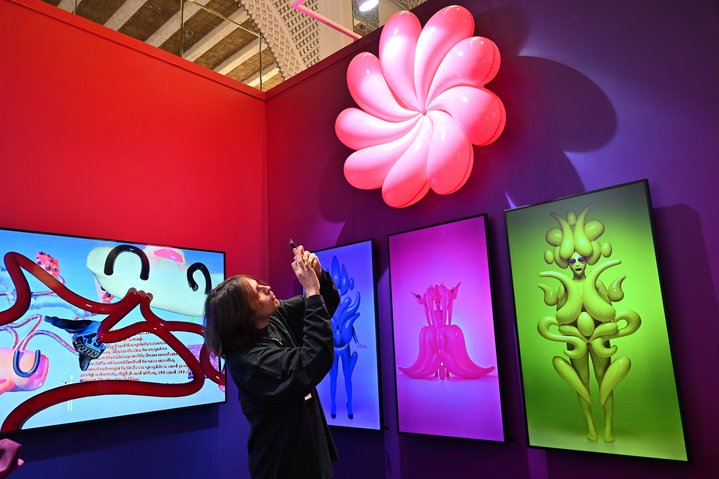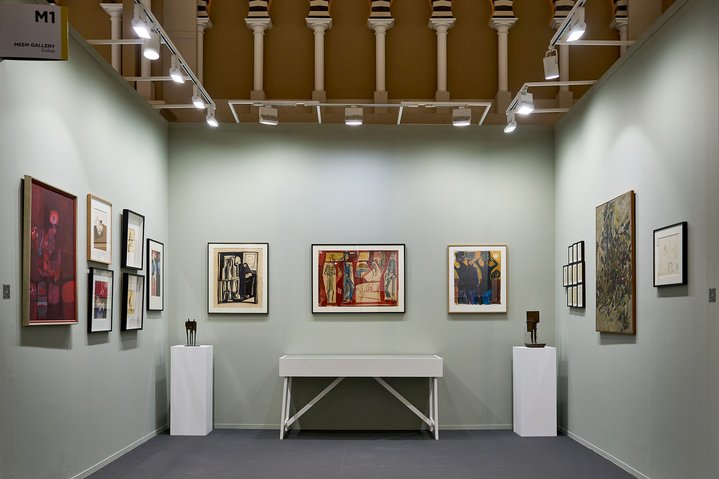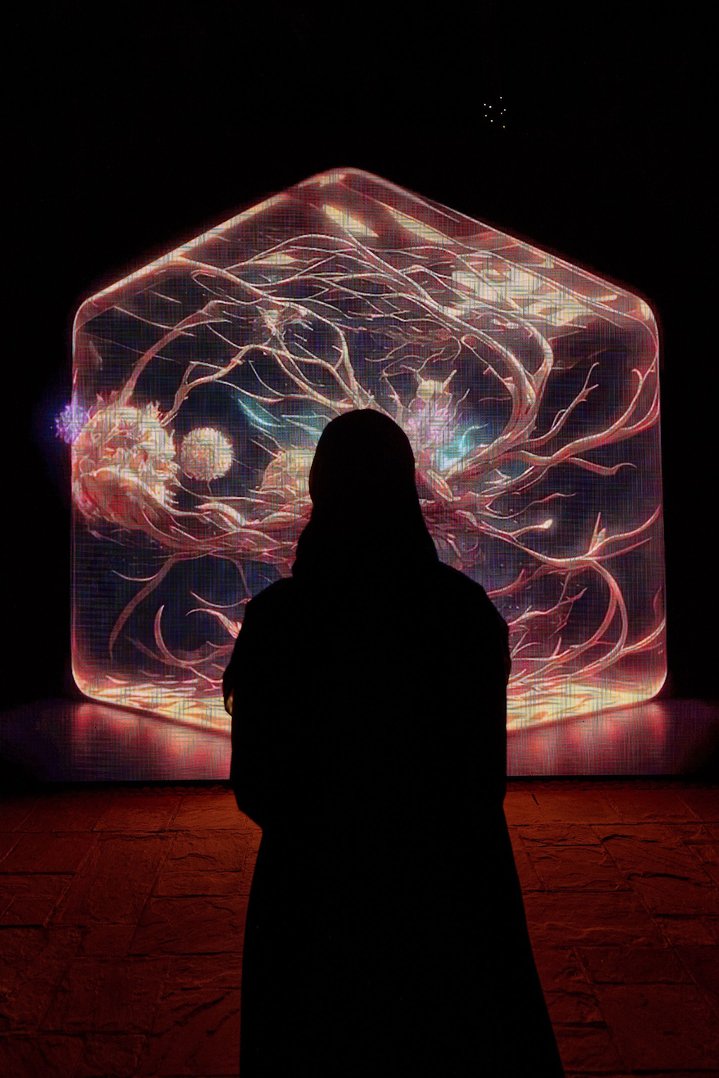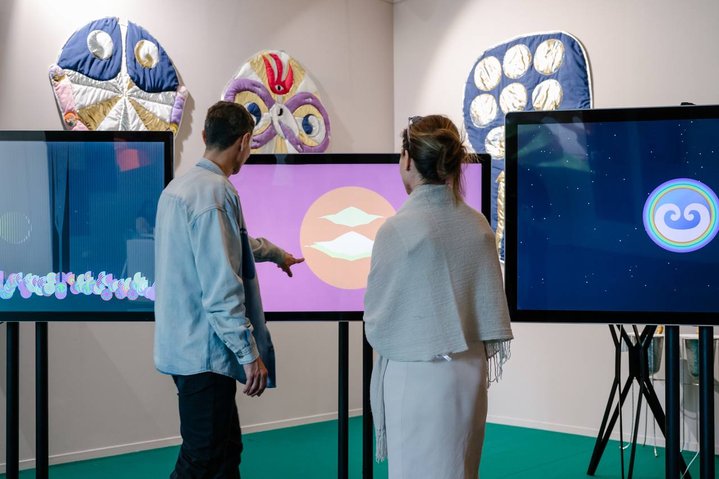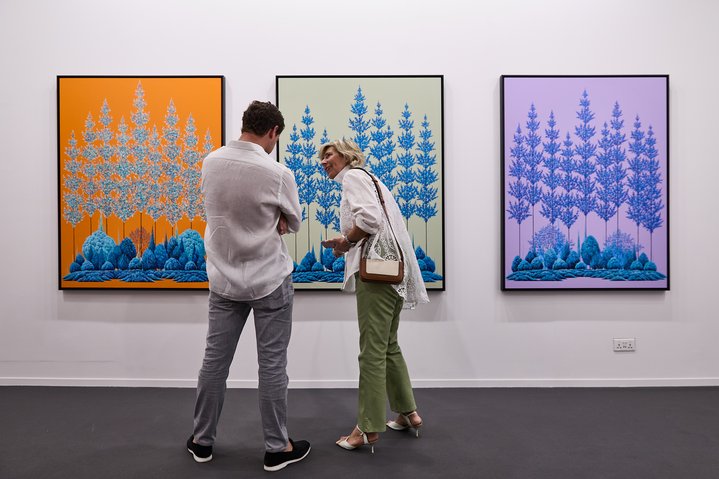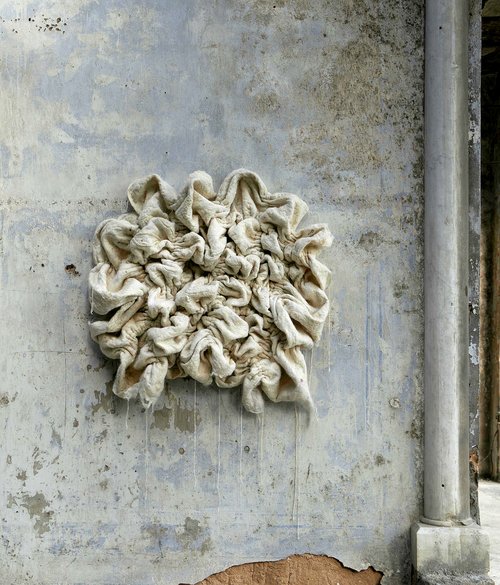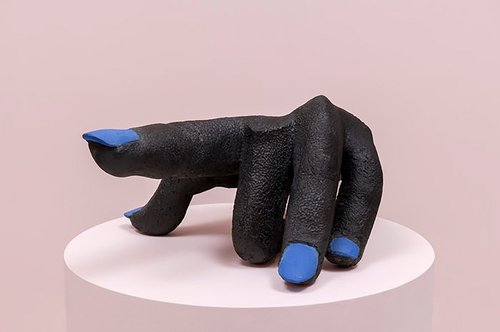Art Dubai: Venturing into the Global South

Art Dubai 2024. Exhibition view. Courtesy of Cedric Ribero for Getty Images
Now in its 17th edition, Art Dubai marked a pivotal moment, bringing together the Global South and signaling its ambition to emerge as the focal point, challenging the Western perception of it as the periphery.
Mirroring the cosmopolitan dynamism of Dubai, its flagship annual contemporary fair, Art Dubai, is having what locals are calling ´its moment´. Over the past sixteen years the fair has transformed from what was initially a modest regional event, conceived by Benedict Floyd as an affordable art space, into what many see now as an international powerhouse. This year, it drew one hundred and twenty galleries from across forty countries, covering blue chip art and works by emerging artists. This current iteration aims to broaden the interpretations of the ´Global South´, extending beyond conventional geographic and economic confines. "More than just an art fair, we are proud to be the meeting place for those communities, who are contributing to the continued growth of Dubai as both global city, and capital of the Global South,” said Pablo del Val, artistic director of Art Dubai, adding that "over 60% of our programme is drawn from the Global South, presenting the best galleries and telling the stories of the leading artists from this region".
Like last year, the fair was divided into four sections: Contemporary, Bawwaba, Modern, and Digital. Bawwaba, meaning ´gateway´ in Arabic, featured curated solo presentations and artworks made within the past year, or specifically for Art Dubai. The curator of this section, Emilano Valdés, Chief Curator at the Museum of Modern Art in Medellin, Colombia, chose the title of ´Healing´, with a series of artistic practices that explore healing on a personal and spiritual level. It was notable for contributions by Indian artists. Kolkata based gallery Emami Art brought artworks by Debashish Paul (b.1994); Latitude 28, a gallery from New Delhi showed a collection of works on paper by young female artist Manjot Kaur (b. 1989), and Indian artist Abul Hisham (b. 1987) was presented by Italian gallery Secci.
Contemporary Middle Eastern politics was not out of sight around the fair. The Palestinian question resonated in many galleries, including the art of Saudi-Palestinian artist Dana Awartani (b.1987) at the Chemould Prescott Road Gallery. Elsewhere, a young Dubai gallery with Russian roots called the Nika Project Space was the only gallery to show a conceptual installation, by Palestinian artist Mirna Bamieh (b. 1986).
Aside from the many regular participants across the seventy-two galleries which took part in the main Contemporary art section of the fair, this edition of Art Dubai spotlighted the post-Soviet space. Lithuanian gallery ´The Rooster´, showed works by two young artistic talents, objects by native artist Tomas Dauksa (b. 1988) and expansive paintings by Latvian artist Sandra Strele (b. 1991), whose modestly priced works sold out quickly. Almaty-based Aspan gallery made a notable impact with compelling photographs by Said Atabekov (b. 1965) and innovative multimedia tapestries by renowned Kazakh artist Almagul Menlibayeva (b. 1969). A regular participant, Aspan reportedly sold 17 artworks including a major sale to an institution of a set of nine photographs by Said Atabekov, each priced at $5,500.
Among the standout post-Soviet booths were Gazelli Art House from Baku and Voloshyn from Kyiv, who shared a stand integrating two walls, with Gazelli presenting a diverse array of Azerbaijani art, from the classic paintings by Ashraf Murad (1925–1979) to the contemporary allure of Aida Mahmudova (b. 1982). Voloshyn's (Kyiv/Miami) booth showed romantic landscapes with nettles by Pavlo Kerestey (b. 1962), and works on paper by Fedir Tetianych (1942–2007), characteristic works in which he crafted pieces from found materials, paper scraps and earth, a kind of Soviet Arte Povera.
The Modern section of Art Dubai this year was curated by Dr. Christianna Bonin, Assistant Professor of Art History at the American University in Sharjah, and it focused on past notions of art education and historical display practices that gave rise to today’s Global South. From the 1960s, the Soviet Union engaged in a robust cultural exchange with artists from all across the Middle East, Africa, and South Asia. This initiative included scholarships and exhibition opportunities and formed a parallel political and cultural program very different from its interactions with countries in the West. Bonin´s curated presentation in Art Dubai examined the shared creative approaches, setbacks, and aspirations which came from these encounters. Featuring a wide range of artistic voices from the most diverse of countries across a broad area, such as Uganda, Syria, Ukraine, and Sri Lanka, it prompted us to reflect on connections that transcend geopolitical borders, forging links between East and East or South and South.
It shed light on the emerging significance of cities like Kyiv, Cairo, Almaty, and Tashkent as burgeoning centers for international study and exchange. By highlighting these often-overlooked facets of art history in these regions, Bonin unveiled new art practices and perspectives, with fresh insights. Despite its modest scale, featuring only eleven galleries, the Modern section felt like an institutional exhibition, full of profound stories and historical connections. There were several fascinating narratives, like Iraqi painter Mahmoud Sabri (1927–2012), who travelled to the Soviet Union in 1960 to study mural painting at the Surikov Art Institute, guided by Aleksandr Deineka (1899–1969). Or Sri Lankan artist Chandraguptha Thenuwara (b. 1960), who also studied at the Surikov Institute in Moscow although years later, during Perestroika. He repurposes iconography not as a religious image, but as a means to articulate the pain and suffering in his homeland. Iraqi artist Dia Al Azzawi (b. 1939), shown by Dubai's Meem Gallery was featured in exhibitions of Iraqi art organized by the Soviet Union during the 1950s and 1960s.
Although this section was packed with diversity, the gender divide fell short: there was only one female: Lebanese artist Fatima El Hajj (b. 1953). A reflection of historical biases, according to Bonin, who attributed this stark gender imbalance to stereotypes prevalent in the Soviet times. The art forms historically associated more with men were spotlighted at the fair, and in future, an exploration of traditionally female art forms, such as textiles, might reveal a more diverse representation of female artists across the region.






